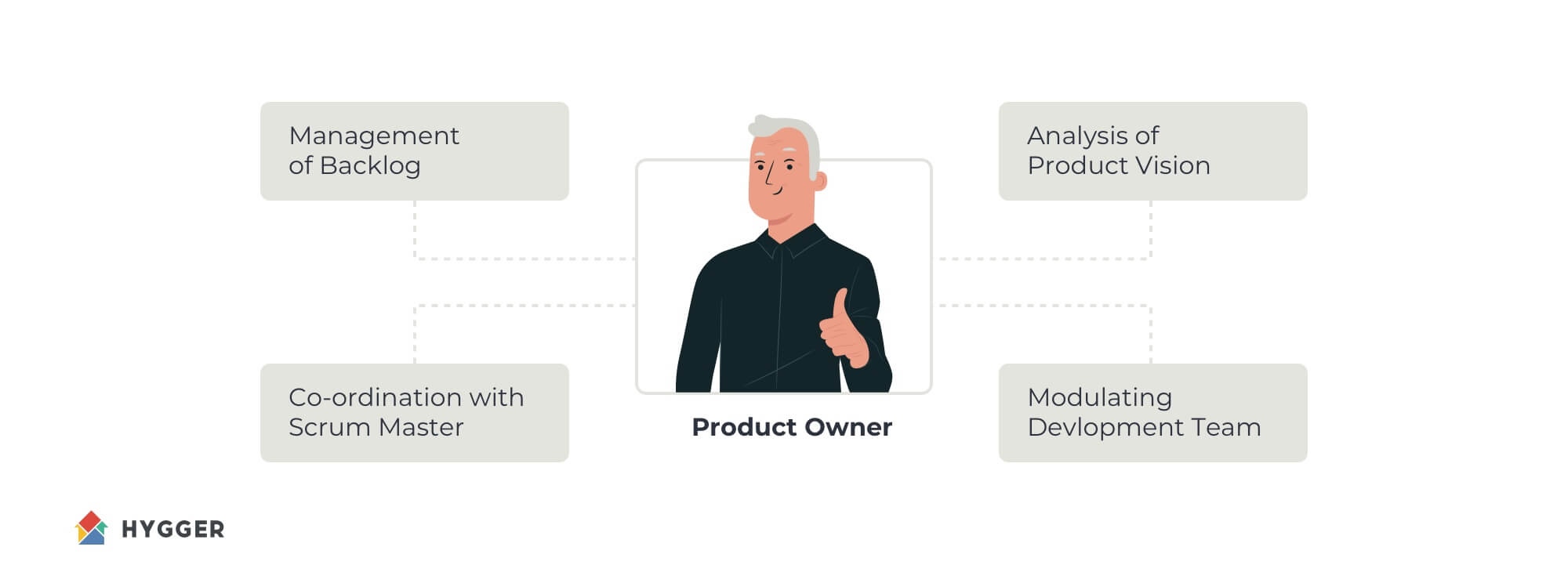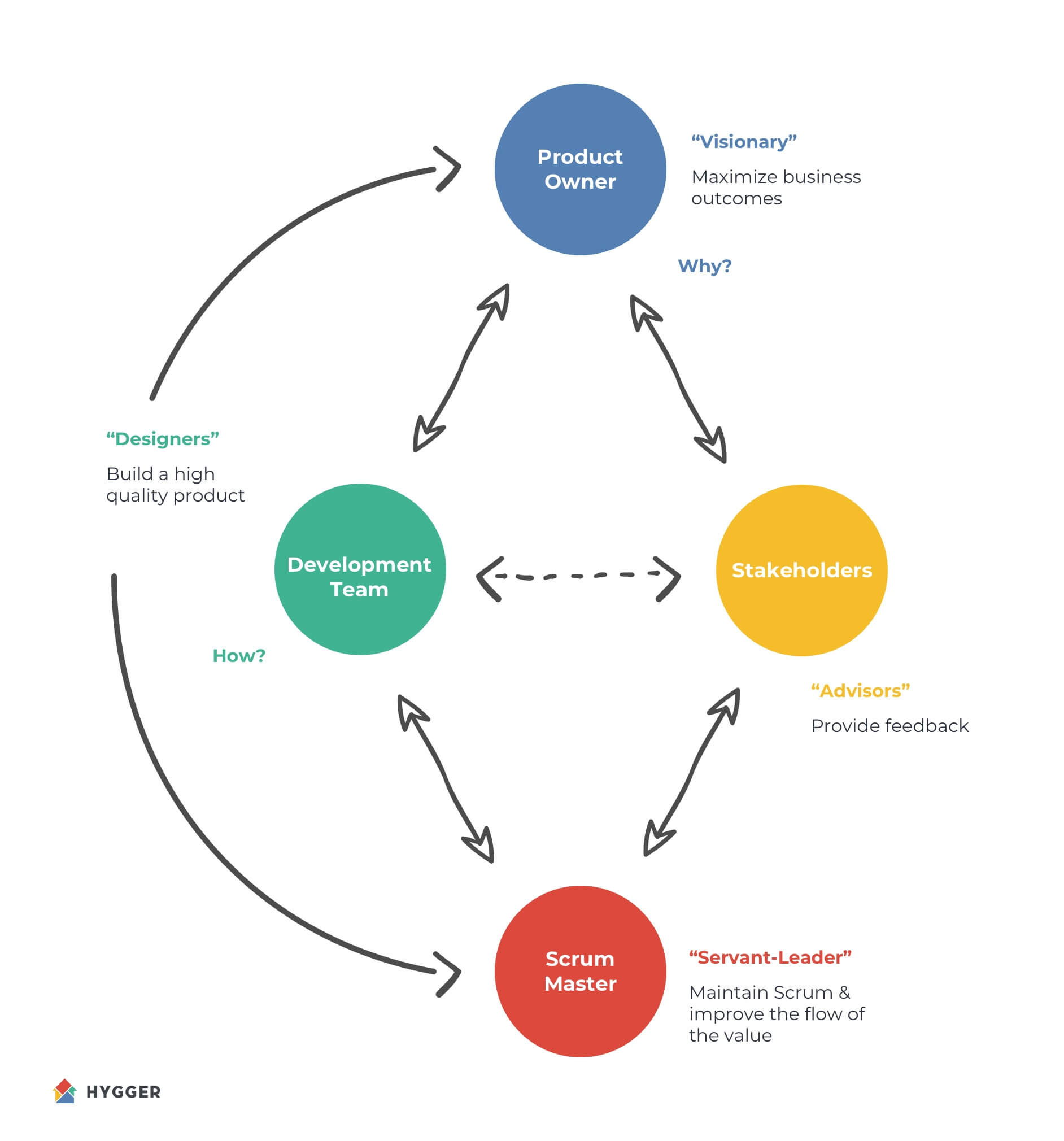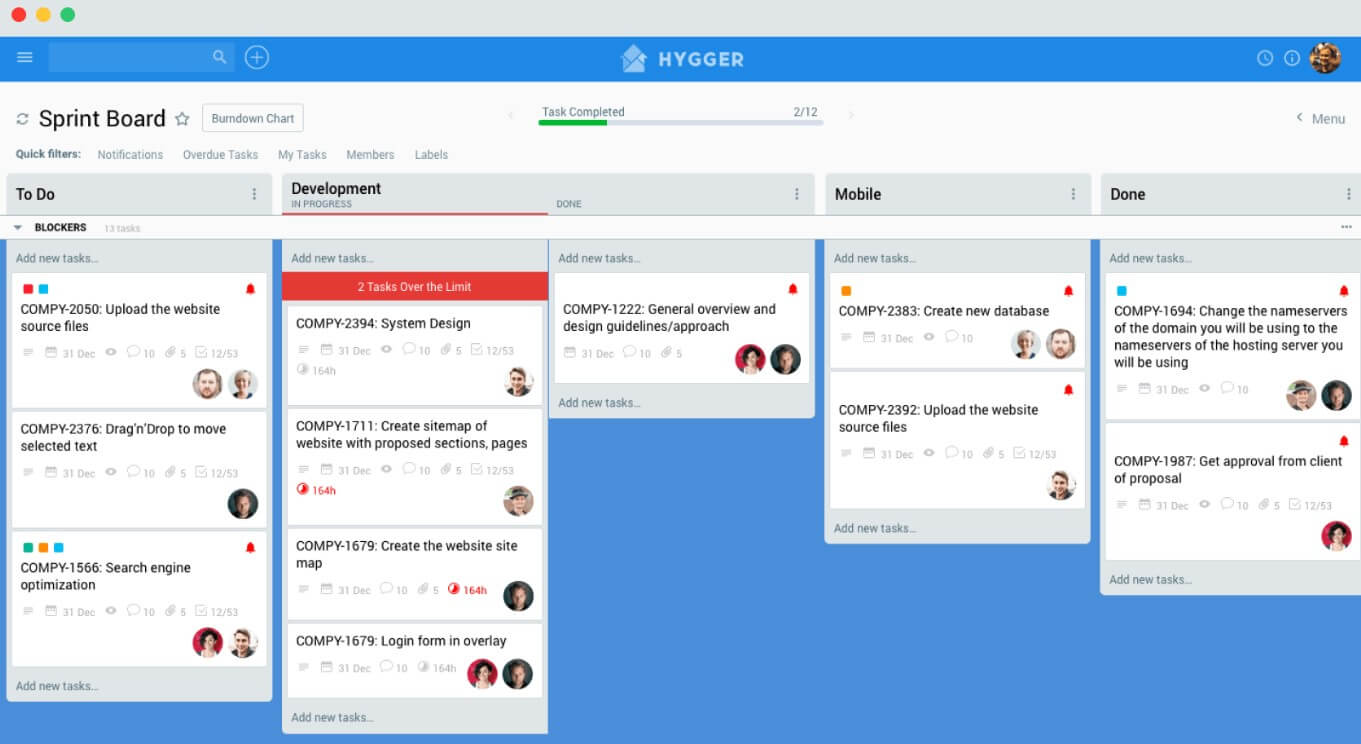Scrum Roles
A quick guide to Scrum roles and responsibilities
Browse topics
Different project management frameworks help companies all over the world to increase productivity and succeed in different spheres. Waterfall and Agile, Scrum and Kanban, and many other frameworks were created by IT companies to increase the daily efficiency of employees. In practice, Scrum appears to be the most reliable and widely used framework in various companies regardless of their domain.
When a company decides to apply the Scrum philosophy, one of the first things to understand is how Scrum roles differ from traditional project execution roles.

There are only three main roles in Scrum. In this article, we define these roles and describe how you can fold them into your organization.
The Power of Scrum
Scrum is the popular framework in the Agile family and among Agile teams.
Many believe that Scrum is an Agile framework, but there are some nuances in this issue. Scrum represents a set of rigid project management principles, whereas Agile is more about the way of thinking and values instead of precisely documented tactics and methods.
Today the approach is used in most industries to optimize the efficient delivery of complex and innovative products.
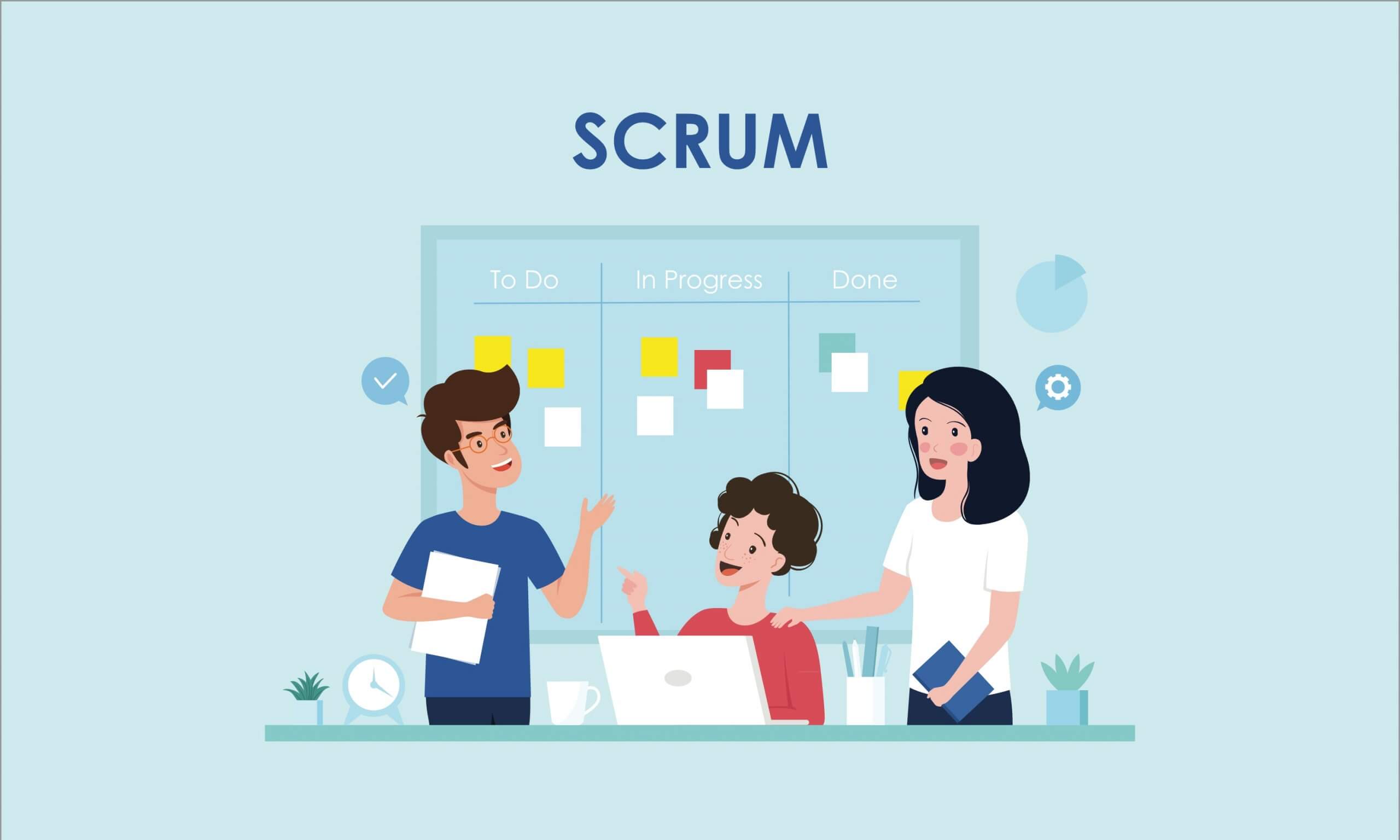
What Are the Benefits of Using Scrum?
Scrum is widely used to collaborate more efficiently, streamline communication, and increase focus. A Scrum team is flexible enough to handle changes fast.
Business priorities are continually evolving. By using Scrum, you can increase your ability to manage those changing priorities more effectively. Scrum also gives increased visibility into projects for all parties involved and this visibility helps everyone stay on the same page. The framework provides more alignment between departments, making team communication much more efficient.
The fiscal benefits of Scrum are also substantial. It allows creating more complex and high-quality products while meeting deadlines and speeding up the software development process. You will be able to launch a product and reap the benefits of your work faster.
Scrum is based on the theory of empirical process control, which in turn is based on three principles:
- Transparency. When people want to make a decision, they need complete visibility into the Scrum process and the current product state.
- Inspection. If people want to be on the same page, inspections need to be done at regular intervals.
- Adaptation. The product/process needs to be immediately adjusted in case someone does deviate from the original sprint plan.
A distinctive feature of Scrum is that it is both iterative and incremental. The cycle of operations should be repetitive. Its goal is to bring the required result or decision closer to discovery with each repetition.
A Scrum team deploys working software in small increments to keep up with the feature demands of clients. What else does a Scrum team do? Who are its members? What roles do they perform? The next block of our article is devoted right to these questions.
What Are the 3 roles in Scrum?
As you might have guessed, there are three roles in Scrum. These roles are:
- Product Owner who holds the vision for the product
- Scrum Master who helps the team to apply Scrum for building the product in a proper way.
- Development team members who build the product.
This may seem clear, but the essence of these job titles can be confusing.

Scrum Roles Versus Job Titles
Scrum roles describe the core responsibilities for the entire Scrum team. However, they are not job titles. Any job title can perform one of these roles. Teams take responsibility for how they organize and keep improving themselves.
Responsibilities of the Entire Scrum Team
The Scrum team includes different members who have certain responsibilities they need to fulfill:
- Break down the requirements, create tasks, estimate, and distribute them. It is all about creating a Sprint backlog.
- Perform Daily Sprint Meetings.
- Ensure that potentially shippable functionality will be delivered at the end of the Sprint.
- Update the status and the remaining efforts for tasks to build a Sprint Burndown diagram.
What Are the Key Characteristics of a Typical Scrum Team?
A Scrum team must have the following characteristics:
- The Scrum Team is empowered.
- It is small and has no sub-teams.
- All team members share the same rules and norms.
- The whole team is accountable for the delivery.
- The Scrum Team is self-organized.
- It works as autonomously as it is possible.
- The skills within the team are balanced.
- Scrum team players work full time.
- People are desirably collocated.
The Secrets of Building a Scrum Team
Scrum assists teams in building their processes and provides the basic structure for regular meetings and artifacts.
What it does not actually provide is a universal model to work within a team. Problems vary, team structures and required skills are also different.
Your team might not know the amount of work needed upfront and can require the flexibility to change course once they know more. Scrum offers a lightweight approach with the three Scrum roles to provide some structure to this complex and ever-changing world.
Role 1. Scrum Master: Definition and Responsibilities
What is the role of Scrum Master in Agile? Scrum Masters help the product group to learn and successfully apply Scrum to reach all business values. They do whatever is in their power to help the Product Owner, team, and the whole company become efficient. A Scrum Master is not a team manager, a project manager, or a team lead. He/she serves the Team, helping to remove impediments, protecting team players from outside interference, and helping them to adopt Agile development practices.
Scrum Masters coach, educate, and guide the Product Owner, team, and the rest of the company in the appropriate use of Scrum. They choose a powerful Scrum software capable of supporting Scrum project management.
An effective Scrum Master ensures everyone follows the Scrum practices. He/she performs the following duties:
- Facilitates and acts as a servant leader who demands self-organization from the development team and encourages them.
- Enables close cooperation across all roles and functions.
- Removes impediments, letting the team focus on work and follow Scrum practices.
- Addresses resource issues and disobedience of Scrum practices.
- Acts as an influential leader and coach who does command or control directly.
- Protects the team from possible internal and external distractions.
Role 2. Product Owner: Definition and Responsibilities
Product Owners in Scrum are responsible for maximizing ROI (return on investment) by identifying product features and translating them into a prioritized list. They decide which features should be at the top of the list for the next Sprint, continually re-prioritize, and refine the list.
The Product Owner is responsible for all product’s profits and losses. He/she is like a spokesperson for clients and needs to represent them. Among the key Product Owner’s responsibilities, let’s define the following list:
- Owns the product backlog; writes user stories and acceptance criteria.
- Prioritizes the product backlog.
- Defines the release date and the content.
- Accepts/rejects product backlog items.
- Has the power to cancel the Sprint, in case the Sprint goal is redundant.
Role 3. Development Team: Definition and Responsibilities
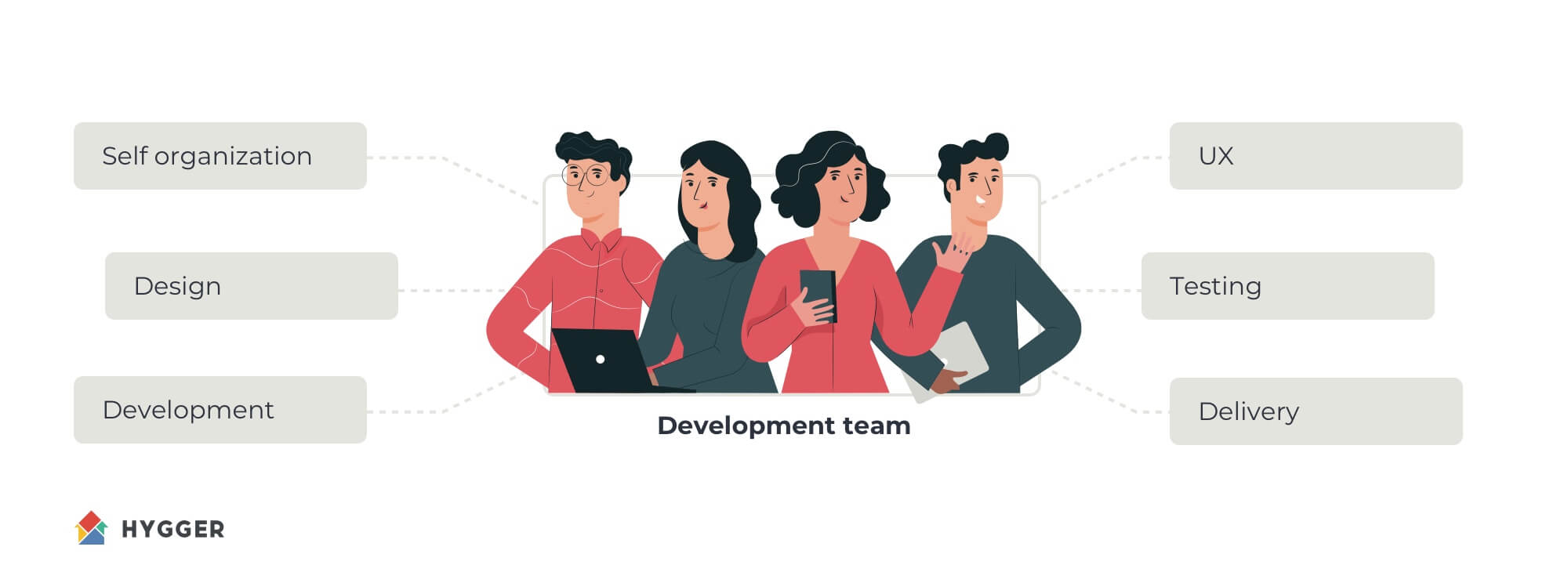
What is a Scrum development team? Developers in Scrum are individuals working together to develop and deliver the requested and committed product increments. The development team includes cross-functional members who are capable of achieving the Sprint goals.
This team may include software engineers, programmers, architects, system admins, analysts, QA experts, UI designers, etc. It builds the product that the PO indicates: the website or an app, for example. This cross-functional Scrum team has the following set of responsibilities:
- Acts as a self-organized team with a high degree of autonomy and accountability.
- Includes all the expertise necessary to deliver the potentially shippable product for each Sprint.
- Decides how many items to add to a Sprint.
- Owns the collective responsibility of developing, testing, and releasing the product increment.
The Development team may perform without a team leader since decisions are taken collectively by all team members.
Comparing the Salaries of the Main Scrum Roles
To compare the salaries of the key Scrum roles (of course, each company will have its own indicators), let’s look at the data provided by the Payscale:
Additional Roles for Larger Scrum Projects
Yes, we are not wrong. There is one more role in the Scrum team, let’s call it additional.
Role 4. Stakeholders: What Are their Roles and Responsibilities?
A stakeholder in Scrum management is an individual or a group of people who are impacted by the outcome of a product.
Stakeholders are also interested in the product’s success and can be within or outside the company that is sponsoring the project. They can be the members of the team (for example, project managers or executives) or external representatives – investors, sponsors, or clients.
What are their responsibilities? Stakeholders usually:
- keep a healthy relationship with the Product Owner and share important product details;
- are responsible for conveying their wishes and concerns to the PO.
- provide regular input to queries from the PO;
- prioritize the work effectively with the Product Owner;
- make updates or keep giving updates regarding any change in the plans.
Additionally, some large enterprises working on complex projects may include more roles in the Agile teams. These can include:
- An independent testing team. It may join the Scrum team and work throughout the product development lifecycle.
- Technical and domain experts. They have the knowledge of technology and a variety of stakeholder requirements or expectations.
- An Integrator. He or she may be required among large Agile teams that work on independent but closely coordinated subsystems for a project. The Integrator is responsible for the integration of the subsystems and testing that may be performed by external testing teams.
- An Architect Owner. This additional Scrum role may be required for architectural envisioning, Scrum planning, and decision making.
What Are the Rules and Norms for Operating the Scrum Team?
The Scrum environment surely defines some of the norms the teams have to follow. However, some rules and norms are developed during the Norming phase.
This set of common rules is critical, otherwise, the team would have to constantly waste time and extra efforts to switch between different value systems and rule sets. Here are some examples of such norms and rules:
- the Definition Of Done is used to decide if work is finished or not
- time and location of the Daily Scrum
- coding guidelines
- scrum tools to use
What Is the Recommended Size for the Scrum Team?
Scrum teams are usually small. The ideal size is 7-10 people. If there are more people in the team, the communication overhead gets too large. In this case, the Scrum team should be split into multiple teams. These teams should be able to coordinate their actions, communicate with each other, as well as work independently.
What About the Collocation?
In order to minimize unnecessary communication overhead, each Scrum team should be collocated. However, today’s popularity of telecommuting and unplanned events or phenomena, such as a Pandemic, encourage more teams to work remotely.
If work has to be spread over multiple locations, it’s better to create independent remote Scrum teams.
Bottom Line
Project management trends prove that Scrum is a great way to help businesses innovate faster. This popular Agile approach accelerates productivity and makes it much quicker to take great ideas and turn them into a finished product. The key is to gather a strong Scrum team that will work cohesively together to get the product to consumers in the most efficient way.
Scrum roles have no hierarchy. The Product Owner, Scrum Master, and developers will take part in Scrum ceremonies and proficiently perform scrum events as a whole to get the job completed.
All of them are equally important. Everyone plays a critical role. Altogether, they can use a smart Scrum project management software like Hygger to guarantee that the project remains organized and that all Scrum values are being upheld.
Put together a strong Scrum team of your dream and deliver outstanding products in the most efficient manner!


